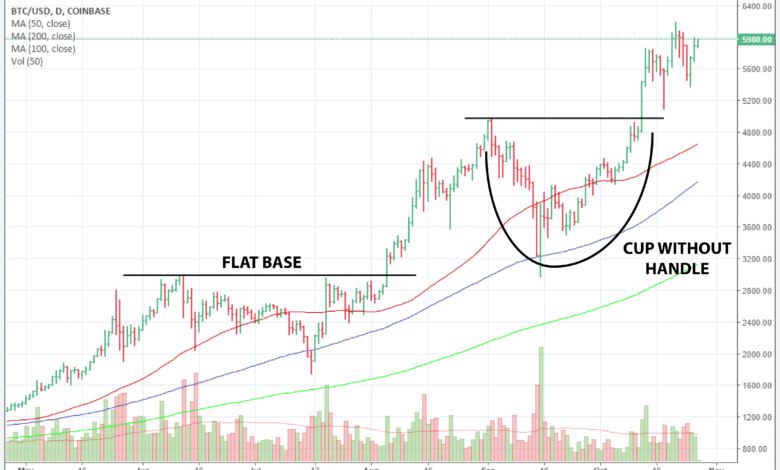Bitcoin Markets Steady as Stocks Rally After Jobs Report

Bitcoin markets have proven to be remarkably resilient, even amid the excitement surrounding record-high stock rallies spurred by a favorable jobs report. While stock indices such as the S&P 500 and Nasdaq witnessed significant gains, Bitcoin’s price remained relatively steady, reflecting a unique dynamic in the cryptocurrency market. Notably, Bitcoin trading hovered just above the $109,000 mark, with only slight fluctuations, suggesting a consolidation phase amidst the optimism. This stability contrasts sharply with the surging Bitcoin price expectations that typically accompany such bullish market sentiments. As investors closely watch both the traditional markets and Bitcoin’s performance, the interplay between jobs data and cryptocurrency valuations becomes increasingly crucial in shaping future market trends.
The landscape of Bitcoin trading reflects an intriguing balance of factors, particularly following a robust jobs report that has lifted overall market morale. While traditional stocks have seen exhilarating surges, the performance of the cryptocurrency sector, especially Bitcoin, remains a focal point for traders and investors alike. The coins maintain a steady valuation amid fluctuating stock prices, indicating the complex relationship between digital assets and conventional financial markets. As the cryptocurrency market grapples with investor sentiment and job creation statistics, analysts are keenly observing how Bitcoin’s stability might interact with economic indicators moving forward. This interplay not only influences Bitcoin price dynamics but also shapes strategic trading approaches within the ever-evolving realm of digital currencies.
The Impact of Jobs Report on Financial Markets
The recent jobs report from the U.S. Bureau of Labor Statistics has undeniably created a buzz in the financial markets, leading to a significant rally in stocks. With the economy adding 147,000 jobs, the positive sentiment has been palpable, leading major indices like the S&P 500 and Nasdaq to reach record highs. Investors reacted favorably to these figures, showcasing a strong confidence in the economy that led firms across various sectors to boost their stock prices. This optimism has continued to support the stock market’s upward trajectory, helping it rally after initial uncertainty in the previous months.
However, amid this stock market surge, Bitcoin’s price has not seen a comparable reaction, remaining largely stable around the $109K mark. This divergence in performance is intriguing, especially considering Bitcoin’s historical tendency to rally alongside positive economic news. It reflects a cautious sentiment within the cryptocurrency market, where traders may be waiting for clearer indicators that would influence Bitcoin price volatility or upward momentum. Despite the stock market’s exuberance, Bitcoin traders appear to be taking a more measured approach, emphasizing the unique dynamics at play in both markets.
Bitcoin Markets: Navigating Stability Amid Stock Volatility
In recent days, the Bitcoin markets have displayed a sense of stability, evidenced by a trading range between $108,605.80 and $110,541.46. This steadiness comes in stark contrast to the volatile nature of stocks, which have surged significantly following favorable economic reports. While trading volumes for Bitcoin have increased by over 10%, the overall sentiment remains marked by caution. Many investors are closely monitoring external factors such as economic reports, regulatory changes, and market trends to gauge how these could influence Bitcoin trading and its price movement in the near future.
Bitcoin’s unique position within the broader cryptocurrency market has reignited discussions on its resilience amid stock rallies. Even with external pressures, such as the job market performances and economic indicators affecting the stock price, Bitcoin has maintained its grip on the market sentiment. This demonstrates its growing acceptance as a store of value, albeit with fluctuating demand. Investors are increasingly weighing the merits of Bitcoin as a hedge against inflation and market instability, which may bolster its appeal even when traditional markets are on the rise.
Understanding Bitcoin Price Volatility in Economic Context
The relationship between Bitcoin price and broader economic indicators is a fascinating study in market psychology. Recent movements have brought attention to how unemployment rates and job creation figures impact Bitcoin in the context of the cryptocurrency market. Despite the discovery of a record low unemployment rate, Bitcoin’s relative stability suggests that investors may be viewing digital currencies differently than traditional assets. High volatility, often associated with cryptocurrencies, might actually provide an attractive alternative for those concerned about the inflation and market corrections that can accompany stock surges.
Moreover, as the job reports suggest a confident economic recovery, it poses a question for Bitcoin’s future performance: will it follow stock market trends, or carve its own path? Enthusiasts argue that as more institutional investors enter the Bitcoin trading space, its price movements could become more aligned with economic metrics. However, the current scenario indicates that market players may prioritize security and predictability over speculative gains, leading to a unique interaction between traditional and crypto markets during such economic bursts.
The Role of Trading Volume in Bitcoin Markets
Trading volume plays a crucial role in determining Bitcoin prices and market trends. Recently, the trading volume for Bitcoin has surged by 10%, signaling increased interest and potentially foretelling future price movements. High trading volumes often lead to increased liquidity, allowing investors to enter or exit positions more easily, which can help stabilize prices in times of market fluctuations. This uptick in trading suggests confidence among traders, even as Bitcoin’s price has fluctuated minimally against a backdrop of improving economic conditions.
The significance of trading volume extends beyond simple metrics; it reflects the underlying sentiment in the Bitcoin markets. When volume rises, it can indicate heightened investor engagement and interest, signaling potential momentum that could carry Bitcoin’s price higher. However, it can also suggest the possibility of volatility if speculative trading heightens. As the cryptocurrency landscape continues to evolve, understanding the impact of such trading metrics will be essential for both new and seasoned investors looking to navigate the complexities of the cryptocurrency market.
Bitcoin Trading: Trends and Market Sentiment
As Bitcoin trading picks up steam, market sentiment remains a critical factor for investors. Current trends show a mixed reaction to broader market movements, with Bitcoin maintaining a steady price around $109K despite significant gains in traditional stock markets. Traders seem to adopt a watchful strategy, likely influenced by ongoing economic indicators and market reports. This cautious trading approach underlines the differences in investor behavior across asset classes, showcasing Bitcoin’s evolving identity as a potential safe haven amidst stock volatility.
In addition, sentiment within the Bitcoin trading community can shift rapidly based on global events, regulatory news, or technological advancements. Positive jobs reports encouraging overall economic recovery could potentially influence Bitcoin’s price trajectory if traders perceive it as an opportune moment for investment. Conversely, if adverse economic indicators emerge, traders might react with bearish sentiment, leading to possible sell-offs. Thus, keeping a pulse on market sentiment is essential for making informed trading decisions in the ever-evolving cryptocurrency landscape.
Bearish Traders Suffer Liquidations Amid Optimistic Markets
Recent data from Bitcoin markets show a notable phenomenon: substantial liquidations among bearish traders, which totaled approximately $63.17 million. This indicates a strong shift in market sentiment, favoring those with bullish positions amid an environment positively influenced by the latest jobs report. With many traders betting against Bitcoin’s price movements, this wave of liquidations serves as a reminder of the risks associated with short positions in a volatile market where upward trends can quickly eliminate bearish bets.
While Bitcoin has remained relatively stable, the bear market participant reaction could provide insights into future market trends. The significant liquidation of short positions challenges assumptions about Bitcoin’s susceptibility to negative news, revealing a more complex interplay where traders may need to reconsider their strategies. As bullish sentiment continues to drive Bitcoin’s market dominance, understanding the adversities faced by bearish traders becomes crucial for comprehending the dynamics at play within the cryptocurrency market.
Bitcoin Dominance in the Context of Crypto Sector Growth
Amidst the backdrop of shifting market dynamics, Bitcoin’s dominance within the cryptocurrency sector remains noteworthy. Currently, Bitcoin holds a dominance of 65.34%, a slight increase reflecting its enduring position as a market leader. This dominance is indicative of Bitcoin’s stability compared to other cryptocurrencies, particularly during periods when broader market indicators like stock price rallies influence sentiment. A strong Bitcoin presence can attract more significant investments, as traders often view it as a benchmark for evaluating the overall cryptocurrency market.
Moreover, as the crypto sector sees gradual growth, Bitcoin’s dominance suggests that it continues to captivate investor interest while hedging against the overall volatility inherent in digital assets. Investors often lean towards Bitcoin during times of uncertainty within other crypto markets, often perceiving it as a reliable investment vehicle. Maintaining a prominent position not only reinforces its credibility but also encourages the development of institutional interest in Bitcoin, which may ultimately contribute to its price stability and market resilience.
Future Prospects for Bitcoin amid Economic Recovery
With the recent positive jobs report signaling economic recovery, the future prospects for Bitcoin could become even more intriguing. As investors rally around traditional stock markets, the potential for Bitcoin to enjoy parallel growth remains feasible. Many analysts suggest that as the economy strengthens, Bitcoin’s perceived value as a hedge against inflation and an alternative asset might attract more investment capital. This shifting landscape could pave the way for substantial price movements, aligning Bitcoin more closely with changing economic indicators.
However, this optimistic outlook is not without its challenges. Bitcoin still faces regulatory scrutiny and competition from altcoins that could alter its market position. Traders and investors must stay informed about these potential shifts, as developments in government policy or market sentiment can dramatically influence trading behavior. With informed strategies and an eye towards both traditional and cryptocurrency markets, participants can navigate these complexities while capitalizing on opportunities presented by a recovering economy.
Analyzing Bitcoin’s Price Stability in a Volatile Market
In an era characterized by market volatility, Bitcoin’s price stability at approximately $109K presents an intriguing case study. While stocks have experienced robust rallies following the latest jobs report, Bitcoin’s steadiness reflects a different response to economic indicators. Investors are closely analyzing the interplay between economic data and Bitcoin’s performance, with many positing that its stability could suggest a potential maturity in the cryptocurrency as a mainstream asset. This stabilization may indicate a shift towards greater acceptance and utilization of Bitcoin among investors seeking a refuge from traditional market fluctuations.
Furthermore, Bitcoin’s resilience amid volatility highlights its evolving narrative as a digital asset. Unlike in previous cycles where sharp corrections followed market highs, this latest performance demonstrates a growing consensus on Bitcoin’s fundamental value. As traditional financial markets become more interconnected with cryptocurrencies, discerning the undercurrents influencing Bitcoin’s price stability will be essential for all stakeholders. As we advance, understanding these dynamics will inform future strategies in both Bitcoin trading and investment practices, establishing a clear road toward a more integrated financial future.
Frequently Asked Questions
What impacts Bitcoin prices in the cryptocurrency market?
Bitcoin prices in the cryptocurrency market can be influenced by various factors, including economic indicators like jobs reports, stock market performance, and investor sentiment. For instance, a positive jobs report can lead to increased optimism, affecting Bitcoin trading by stabilizing or increasing its price.
How did the recent jobs report affect Bitcoin trading?
The recent jobs report, which showed better-than-expected employment figures, led to a significant rally in stock markets. Although Bitcoin remained mostly flat, such economic news typically influences Bitcoin trading by shaping market sentiment, reflecting broader economic conditions that can indirectly affect cryptocurrency prices.
What is the relationship between Bitcoin price and stock market rallies?
Typically, Bitcoin price can show varying responses to stock market rallies. While stocks surged post-jobs report, Bitcoin remained steady around $109K, showcasing that the cryptocurrency market does not always mirror traditional markets. Factors such as investor behavior towards risk and overall confidence in the economy play crucial roles.
Why did Bitcoin remain flat despite the stock market’s positive reaction?
Bitcoin remained flat even as stocks rallied because of investor caution; many were likely focused on equities following upbeat economic data, while Bitcoin trading was less sensitive to immediate news. This indicates that Bitcoin’s price stability may be due to its unique position in the broader financial ecosystem.
How does the stock rally relate to Bitcoin’s dominance in the cryptocurrency market?
Even during a stock rally, Bitcoin’s dominance in the cryptocurrency market can inspire confidence among cryptocurrency investors. With its dominance slightly increasing, it shows Bitcoin’s resilience and market leader status, despite fluctuations in investor focus between stocks and cryptocurrencies.
What trends can we expect for Bitcoin price following a positive jobs report?
After a positive jobs report, Bitcoin price trends may show stabilization or a minor increase, reflecting overall market optimism. However, due to its unique market dynamics, Bitcoin trading may not always correlate directly with traditional market movements, leading to varied short-term trends.
How did the Bitcoin market react to the latest changes in trading volume?
The Bitcoin market saw a trading volume increase of 10%, reaching $55.86 billion, which indicates heightened interest and activity. This surge in trading volume often correlates with price movement, potentially laying the groundwork for future Bitcoin price adjustments as investor engagement rises.
What does a stable Bitcoin price mean for cryptocurrency market investors?
A stable Bitcoin price during volatile market conditions can signal investor confidence and create a favorable environment for long-term cryptocurrency market investors. This stability may attract more investors seeking to capitalize on potential future growth in Bitcoin and the broader market.
What role do BTC futures contracts play in Bitcoin trading?
BTC futures contracts significantly affect Bitcoin trading by allowing investors to speculate on future price movements. Recent data showed a slight increase in open interest, suggesting a growing interest in Bitcoin futures, which can further influence underlying Bitcoin prices.
How does the recent employment data relate to Bitcoin market dynamics?
Recent employment data indicated a strong job market, positively affecting market sentiment. While Bitcoin’s price remained stable, this economic backdrop can impact investor perceptions of cryptocurrencies, often leading to increased activity in Bitcoin trading as a hedge against traditional market fluctuations.
| Key Metric | Details |
|---|---|
| Jobs Created | 147,000 jobs added in June, compared to the forecast of 110,000. |
| Unemployment Rate | Fell to 4.1% from 4.2% in May, contrary to estimates of a rise to 4.3%. |
| Bitcoin Price Change (24h) | Steady between $108,605.80 and $110,541.46, currently at $109,606.88, up 0.05%. |
| Trading Volume | Increased by 10% to $55.86 billion. |
| Market Capitalization | Rose by 2.54% to $2.3 trillion. |
| Bitcoin Dominance | Edged up to 65.34%, a 0.09% increase. |
Summary
In the current landscape of Bitcoin Markets, while traditional stock markets have seen a significant rally fueled by positive jobs data, Bitcoin has remained relatively stable. The latest employment report showcased an impressive job growth that exceeded expectations and decreased unemployment, which played a significant role in boosting investor confidence in equities. However, despite this surge in stock prices, Bitcoin held steady, reflecting its unique position in the market as a cryptocurrency that often behaves independently of traditional market movements.




